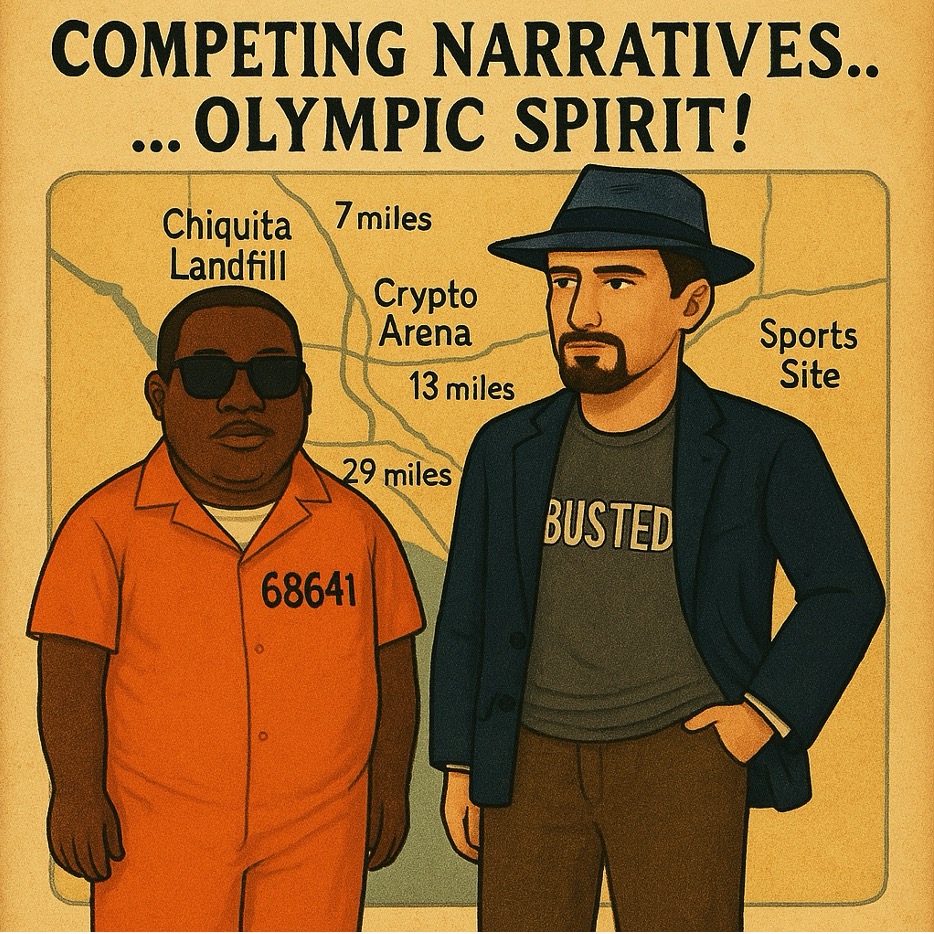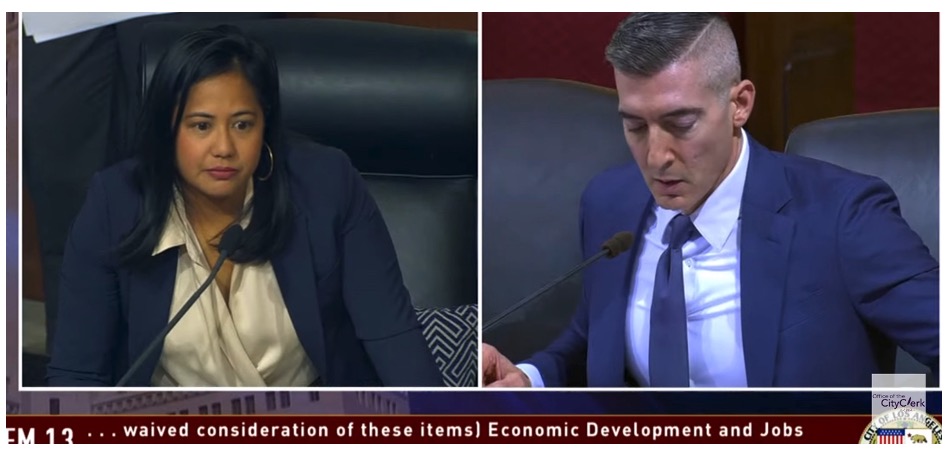Comments
ERIC PREVEN’S NOTEBOOK - It’s wild. The people who committed the abuse? Not paying a dime. The institutions that enabled them? Still standing. Meanwhile, the taxpayers — who did nothing wrong — are left holding the four-billion-dollar bag.
These look-back windows are supposed to bring justice, and I support that. But when the price tag hits $4 billion, and we’re slashing programs to pay it? That’s not justice — that’s generational punishment.
Are we destabilizing the future to atone for the past? I don’t know. But cutting mental health services, youth programs, and oversight — the very things that prevent abuse — feels upside down.
To their credit, some plaintiffs’ lawyers have structured settlements to avoid bankrupting the county. But not all. And in the end, the only consistent winners are the lawyers.
I’d love to see anyone still alive who committed these crimes severely punished. But telling taxpayers to fund a moral reckoning while cutting the library hours and turning off the lights? That’s not accountability. That’s a civic shell game.
Hericles and the Fire Beneath the Landfill
Once upon a Tuesday, during the regularly scheduled meeting of the Los Angeles County Board of Supervisors*, a young man approached the podium with a simple question.

Under fifty miles to most Olympic sites - But not San Pedro yet. Don't tell Mc😡sker.
Where, he asked, was the Supervisor of District Two during the most important landfill hearing of the year?
It was a fair question—grounded, appropriate, perhaps even overdue. What it wasn’t, apparently, was welcome. The gods on high frowned. One of them ordered the young man’s microphone silenced. He was branded disruptive. Security was alerted.
And the supervisor in question? He wasn’t absent due to an emergency. He was across town, cutting a ribbon at the shiny new George Lucas Museum of Narrative Art. That's not myth. That’s the actual record.
What happened next has now been recast, with only slight exaggeration, as a children’s book proposal: Hericles and the Fire Beneath the Landfill.
Hericles, of course, is our stand-in for the questioner—a sort of civic Hercules, but with a goatee and a public comment card. Instead of fighting lions, he fights silence. Instead of wielding a club, he wields sarcasm and useful information. He’s not a demigod, but a Smart Speaker. And in this story, his mother and her loyal dogs are the real reason he steps into t.
This fable is not just about a boy taking on a god named Zev, although that part is pretty good. It’s about what happened after. Because the supervisor who he asked about and had skipped the hearing was later convicted, not for missing public testimony, but for trying to funnel public money to his own son’s benefit. A fall from grace so perfect it could have been written by Sophocles, if Sophocles had covered the county. He only covered the city.
Hericles, meanwhile, was not convicted. He was honored.
The book ends, not with the gaveling out of public comment, but with the news that continues to haunt the region: Chiquita Canyon, the very landfill that brought Hericles to the podium that day in 2017, is still burning. A 90-acre underground fire is smoldering beneath it, spewing noxious gases into nearby neighborhoods. Children, elders, working families—people with dogs and gardens and lives—are breathing that air. Assemblywoman Pilar Schiavo, to her credit, has been trying to sound the alarm. She went to the landfill herself. She spent the night in a motorhome.
It’s not funny.
That part—unlike the ribbon cuttings and the self-congratulatory temple to narrative—is very much real. And very much not amusing. People are suffering. Every hour this fire goes unchecked is another reminder that environmental justice and public accountability are not accessories to government. They’re the whole point.
The idea of a children’s book may sound ridiculous. But you try explaining to a child why the people in charge didn’t listen until it was too late.
I encourage you to watch the testimony from Assemblywoman Schiavo. But a word of caution: this video is upsetting. It’s upsetting because it’s true. And it’s resonant because it explains, better than any parable ever could, why elected officials must listen to their people.
Watch here: Los Angeles Landfill Fire Grows to 90 Acres—May Burn for Decades | Pilar Schiavo
Dolores Huerta Day:
Smart Speaker: Thank you, what a nice recognition. Not to correct the great Dolores Huerta, she is right, Hilda Solis is humble and hard working but she has a village named after her, not that humble. As we pass by Cesar Chavez Day, I hope that the City Council will come by to recognize Ms. Huerta. This is a woman who organized a 5,000-worker grape strike and negotiated [d] contracts while raising 11 children, which I find absolutely impressive. Si Se Puede is right—but not if you want to testify at City Council. There, if you are a working-class person and can't schlep to City Hall, they have cut down the phone-in options. It is a shocker. Where is Supervisor Mitchell today? She seems to have skipped out. Maybe because of Item 7…”
(He is then cut off by the chair or moderator.)
Later that morning:
Smart Speaker: Thank you, and this is on all available items and general public comment merged into one, correct?”
Executive Officer: Yes, please continue.
Other than Item 2, thank you — they covered it. As you know, I’m a volunteer, and April is Volunteer Month. No village named after me, but I do still show up to participate in local government, which gets harder. Appreciate Item 32B for that.
Items 14 and 21 — emergency contracts. We all love a good emergency, but it’s been months. We should at least be verifying competitive rates, especially given the headwinds coming from Paul Krekorian’s Billion Dollar Budget Wrinkle. Somebody cue up his Richard Riordan speech — oh wait, the Pantry closed. Sad.
Items 26 through 29 — $10 million in sheriff liability. We ought to prewrite some of these disgusting payouts. Get ahead of demand. Good work, Harrison.
Item 7 — this one’s important. Years ago, in County lore, MRT was courting Watt Companies in the Hall of Administration, and five months out of Regional Planning, Richard Bruckner was right there, rubbing his hands together as Sachi Hamai popped over to say hi. Bruckner was a helpful man, service-oriented, but a little too eager. This joint County-Metro project has a new name, new LLC, which I find creepy — classic rebrand. Now it’s being steered by Mayer Brown, home to Edgar Khalatian, Olympic whisperer, and Garcetti confidant.

Public Integrity is exceptionally weak.
This isn’t your garden-variety homeless fraud — the feds are on that — but it’s definitely insider ball. When I flagged Bruckner’s lobbying issue, the D.A. collapsed in dramatic silence. And then? Did absolutely nothing.
As for sole-source contracts: can someone say out loud that pharmacy delivery is competitive? We love Cardinal Health, but shouldn’t we bid it out? That’s how it works outside the Hall.
Nobody wants to get mired in triplicate to buy duct tape, but we need balance. Pestrella is too busy to monitor every job order card, but when I looked again, I’m a volunteer — I saw some horrifying exhibits. If you're curating a Museum of County Fraud, first, it has to be free. Second, I’ll be your man Friday consultant. Pro bono.
Wait—are you talking during my comments?,
(cut off again)
“One Minute to Midnight”
Once upon a civic calendar, when hope sprang eternal and meetings were held with regularity, a new era dawned at the Los Angeles County Board of Supervisors. Supervisor Lindsey Horvath, with a fresh binder and a reformer's tone, took the helm in December 2023. Her big idea? Return to weekly public meetings and inject sunlight into the bureaucratic shadows where “performance evaluations” used to double as unscheduled scoldings.
She even created a fourth Tuesday slot: an open-air forum where department heads could speak plainly, out loud, and in front of the public, about what's working and what's not. You know, governance.
Then came Kathryn Barger, the next chair, who said, “You want meetings? I’ll give you meetings.” She stacked 36 Board meetings for 2025, and thanks to Measure G: a six-pack of budget hearings. Seven departments per day, one spotlight each. Now, the departments get to explain themselves. They testify, present, justify — in the light of day.
The public? They get to comment, but here’s the catch: just one time per budget hearing day. That means one public comment to address a seven-department smorgasbord. Efficient? Sure. Equitable? Hmm.
Still, let’s be honest — it’s a festival of transparency compared to what goes down at L.A. City Hall.
The Great Disappearing Act:
Here’s how Los Angeles does its $13 billion budget:
38 departments.
Two juggernauts — LADWP and LAWA.
One agenda item.
That’s right. Want to comment on the LAPD, Planning, street repair, or the Zoo? You get one minute. It’s a civic budgetary matryoshka doll. Every service is stacked into “Item One” — a structure designed not to inform the public, but to defeat them.
This isn’t accidental. It’s the Krekorian Doctrine — maximum compression, minimum engagement. Former Budget Chair Paul Krekorian made a public comment a speed bump between lobbyists and lunch. No department heads testifying. No real questions. Just a slurry of charts and scripted nods.
It’s a farce. And this year, with a looming billion-dollar deficit and layoffs on the table, it’s a dangerous one.
Mayor Bass is expected to release her budget on April 21. She’s calling for $900 million in cuts. Labor costs are surging. Lawsuits are stacking up. And unless the Council gives the public a real process, trust will keep bleeding out.
Here’s the ask to the new Budget Chair, Katy Yaroslavsky: Let the departments speak out loud.
Bring them to the table. Let them explain. Let the public respond. Don't bury them under “Item One.” And don’t let the hearing become another Krekorian-style puppet show.
Also, a word of warning.
Years ago, I retained a lawyer named Paul Boylan to protect public comment rights. We won in court. Then he took the money, sealed the deal without showing me the settlement, and walked. When the City violated the ruling days later, he shrugged. “They corrected it,” he said.
They didn’t. They ran a do-over and pretended it was fine. He cashed the check.
Lesson? Even your lawyer might bail when it matters. You’ve got to rely on your voice — sometimes shaking — at a podium with 50 seconds on the clock.
Councilmember Yaroslavsky, you can end this budget charade.
Let the public speak.
Make the departments show up.
Give the city back its process — or at least its dignity.
Because right now, the only department getting properly funded is the Office of Secret Salaries and Mega Events.
And frankly, if we’re keeping David Michaelson around, we may need to post a listing for “Shady Municipal Counsel, Olympic Edition.”
Just sayin’.

Ysabel Jurado CD14 is wide-eyed, about the Matt Szabo CAO proposed haircuts, inherited from Krekorian who failed upstairs to become inhouse docent and secret megaevent facilitator.
What Would Admiral Yi Do?
Let’s just say it plainly: Admiral Yi Sun-sin did not defeat a 133-ship Japanese invasion force in a rowboat so Los Angeles could displace his legacy for an Olympic photo op.

Turtle Ship taken to Convention Center.
The Turtle Ship, that dignified symbol of strategy, resilience, and international friendship, was quietly evicted from Los Angeles City Hall like an overripe sandwich. A gift from Busan, South Korea — a cultural treasure — now reduced to a logistical inconvenience. Reassigned to the Convention Center. Because, of course, the Olympic flags needed space.
To recap: The city of Los Angeles has more reverence for a temporary banner stand than it does for one of history’s most iconic naval defenders.
What would Admiral Yi do? I’ll tell you. He wouldn't have authorized the Prop K monster. He wouldn't have rolled over so Harvard-Westlake '28 could privatize and build hundreds of parking spaces under our public golf course. And he certainly wouldn't sit by while Oy Bar closes for 100 units with zero parking.
The man fought multiple wars and never lost a battle. Meanwhile, we can’t even build a decent convention center without raiding future motel vouchers and clearing cultural artifacts like it’s a garage sale.
Let’s not romanticize it. The modern Turtle Ship was small, humble, and barely noticed unless you walked by it at City Hall. But it stood for something. And the way it was treated tells us everything about how our city now weighs friendship, history, and public trust: cheaply, quietly, and at the whim of marketing priorities.
And while some will say, “It’s just a model ship,” let me ask this — when was the last time anyone at City Hall stood for something that wasn’t sponsored?
If Admiral Yi were here today, he wouldn’t cut a ribbon.
He wouldn’t take a selfie.
He’d probably wonder how the hell a city with $13 billion can’t figure out who it’s fighting for.
Because here’s the truth: it’s not about a ship. It’s about who shows up when the tide turns.
Admiral Yi showed up.
Busan showed up.
Even the turtle showed up.
Mc 😡sker is still on the call with the IOC.
(Eric Preven is a Studio City-based TV writer-producer, award-winning journalist, and longtime community activist who won two landmark open government cases in California.)












